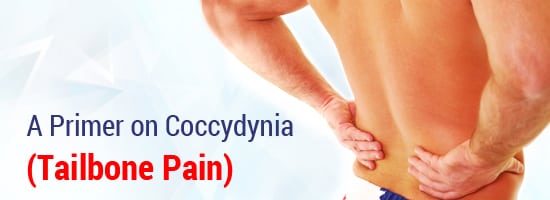
Coccydynia, known casually as tailbone pain, can affect individuals of any age, gender, or fitness level. Tailbone pain is a complex issue, because there are several different potential causes, diagnostic methods, and treatment options available. Anyone suffering from tailbone pain is familiar with the intense pain that often worsens while going from sitting to standing.
What causes tailbone pain?
Tailbone pain is often a secondary symptom of a primary injury. It can develop as a result of pregnancy or being overweight, but it can also develop for seemingly no reason. It’s important to note that there are some things that can mimic the pain felt with coccydynia, including sciatica and an infection in the area. Visiting a specialist will help to ensure that the pain is actually related to the tailbone and not something else.
How is it diagnosed?
The most common diagnostic method is a physical examination and an evaluation of medical history. Many doctors will perform tests that rule out more serious possibilities, such as shingles, sciatica, or bone or tissue disorders. Since it is common to experience both sciatica and coccydynia while feeling the same symptoms from both conditions, the diagnostic aspect can be tricky.
How is tailbone pain treated?
The best treatment for tailbone pain is not the same for every person. Treatment has to be focused on the reasons that the tailbone pain is occurring in the first place. The most common treatment method is the halting of stressful or extreme activities that could be causing the pain to be more prominent. Physical therapy is also an option and can help to relive the muscles surrounding the tailbone. Pain medications can also be used, as well as injections that offer pain relief.
Individuals suffering from tailbone pain should avoid sitting on hard surfaces or staying seated for long periods of time. In rare situations, surgery to remove the tailbone may take place.
Seeing a doctor who specializes in pain disorders is an important first step in handling tailbone pain. It’s necessary to rule out other possibilities and to target the root cause of the pain before moving forward with effective treatment options.

